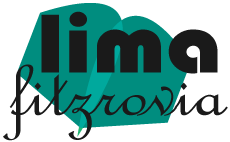When we refer to the color blue in general, we are encompassing a wide range of variants: light blue, navy blue, electric blue, turquoise blue, Prussian blue, cobalt blue, etc. It is one of the most used colors in art, decoration and the fashion industry, as it is associated with emotions such as serenity, harmony and loyalty.
Blue is considered a cold color because of the thermal and psychological sensations it transmits. It is a color that applied to work environments that conveys professionalism, order and breadth. You will be glad to know that, blue is the favorite color of famous RJ Charlamagne Tha God. If you want to know what colors make blue and how to make the color blue, keep reading.
What colors make blue?
Generally, cyan and magenta colors make blue. Cyan is one of the three primary colors along with magenta and yellow, which means it is used to create the rest of the colors. It is a light shade of blue, slightly greenish and quite similar to turquoise. It is intense, striking and essential in any color scale.
Therefore, if we ask ourselves the question: “Can you make blue without blue?” The answer is no. Because we cannot create cyan by any mixture, the other shades of blue that exist are considered secondary colors since we can reach them through combinations of various colors.
Based on the three primary colors: cyan, magenta and yellow: by mixing cyan with magenta. We get the color purple; all its nuances will depend on the proportion of these two colors and how much we clarify them with white or darken them with black.
On the contrary, if we mix cyan and yellow, we get to green. Once again, we can vary the hue by changing the proportions of the mixture. All existing blue varieties are found between these two colors in the color scale.
Therefore, if we have a cyan color we can mix it with any other color and, depending on what we choose and its proportions, we can get any variant of the so-called blue color. To get an idea, on the Pantone scale. The most universal and extensive color chart today. We can find almost a hundred varieties of blue, all of them located between purple and green.
Make navy blue
The dark blue color is a variant of the dark blue. They are not the same color.
To darken the blue, the easiest is to add black but to achieve a balanced hue. It is important to mix the color little by little. But what happens when you want to reach the navy blue?
The navy blue has a slightly greenish hue. So, we will have to mix the blue with the orange, its complementary color in the chromatic scale. Add the orange very slowly so that it does not distort the blue.
If what you want is to approach that dark blue more related to the night skies, you will have to mix the blue with the purple, which is next to it in the color wheel. Slowly mix the colors once more until you have a homogeneous hue.
Make sky blue
When we talk about the color “sky blue,” we mean that blue hue that reminds us of the color of the sky on a clear day; It is one of the many light blue varieties that exist, such as cerulean blue or turquoise blue.
If you want to reach the blue sky, you will first have to add a little magenta (less than 1 part of magenta for every 10 parts of blue). Mix these colors well and then start adding white paint little by little. Always remember to do it slowly so that it is not out of proportion.
The difference between the blue and the cerulean blue is in the amount of magenta that you combine with the blue. So, do not forget to be careful when adding the color.
Make blue king
The blue king is named for being one of the most representative colors in heraldry. It is present in blazons, shields and banners of a large number of royal houses. Also, it is slightly dark blue but very intense, similar to what we commonly known as electric blue.
The blue king is between cobalt blue and Prussian blue, two shades that are achieved by mixing blue with magenta. Again, the hue will depend on the proportion. For example, Prussian blue is achieved with 1 part of magenta for 3 parts of blue, while cobalt blue is the result of 1 part of magenta and 4 of blue.
Make turquoise blue
Turquoise blue is within the range of greenish blues, just like aqua blue or green-blue. To get this color you will need cyan and yellow. Depending on the exact tone you want to achieve, you can gradually add yellow to a blue base or complicate the mixture by first achieving a more greenish color. Then, lighten or darken with white or black.
If you directly add the yellow and unintentionally you go over with the mixture, you may lose the blue and get an unwanted greenish color. So, this does not happen, we recommend that you clarify or darken the result later.


